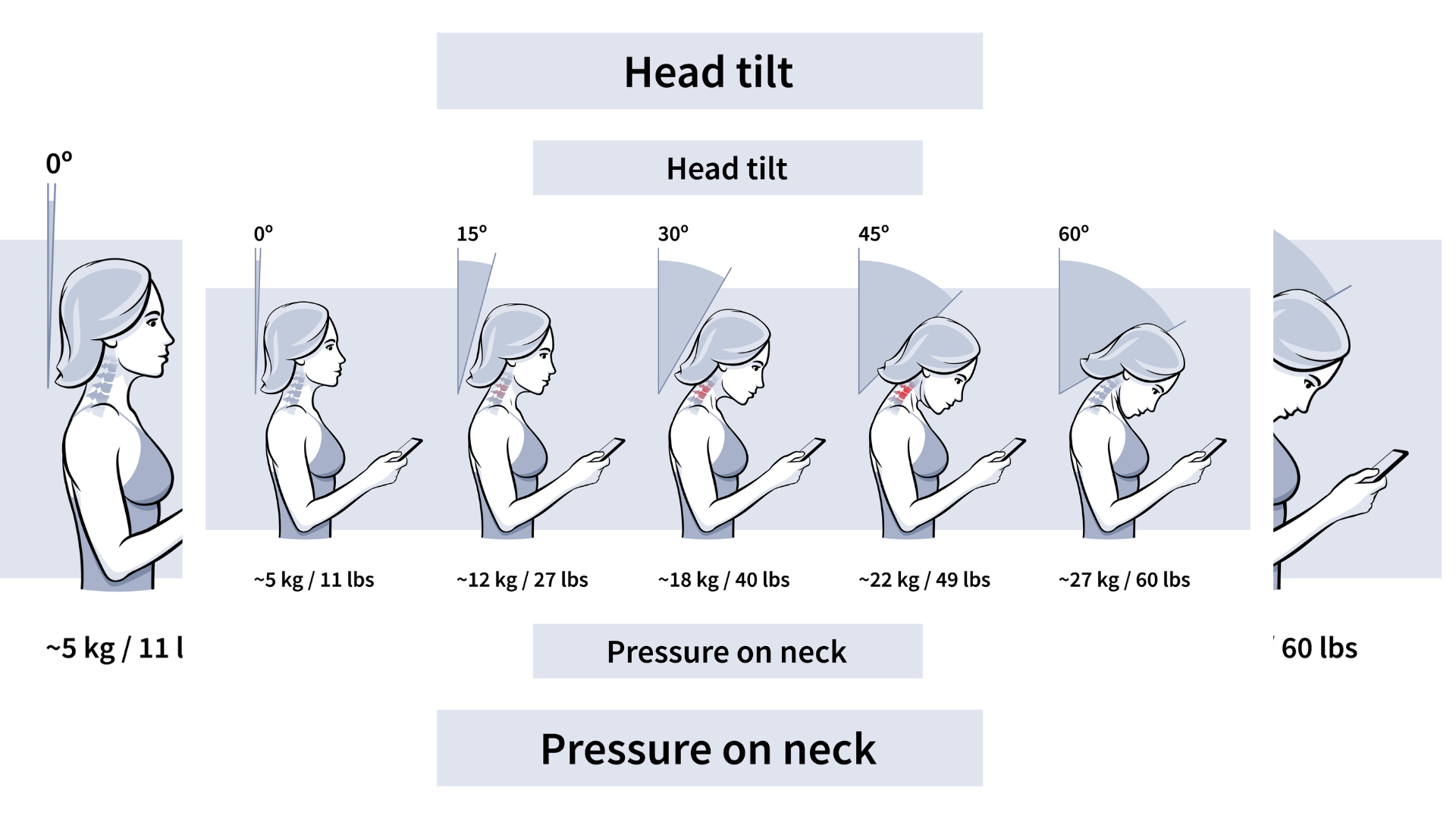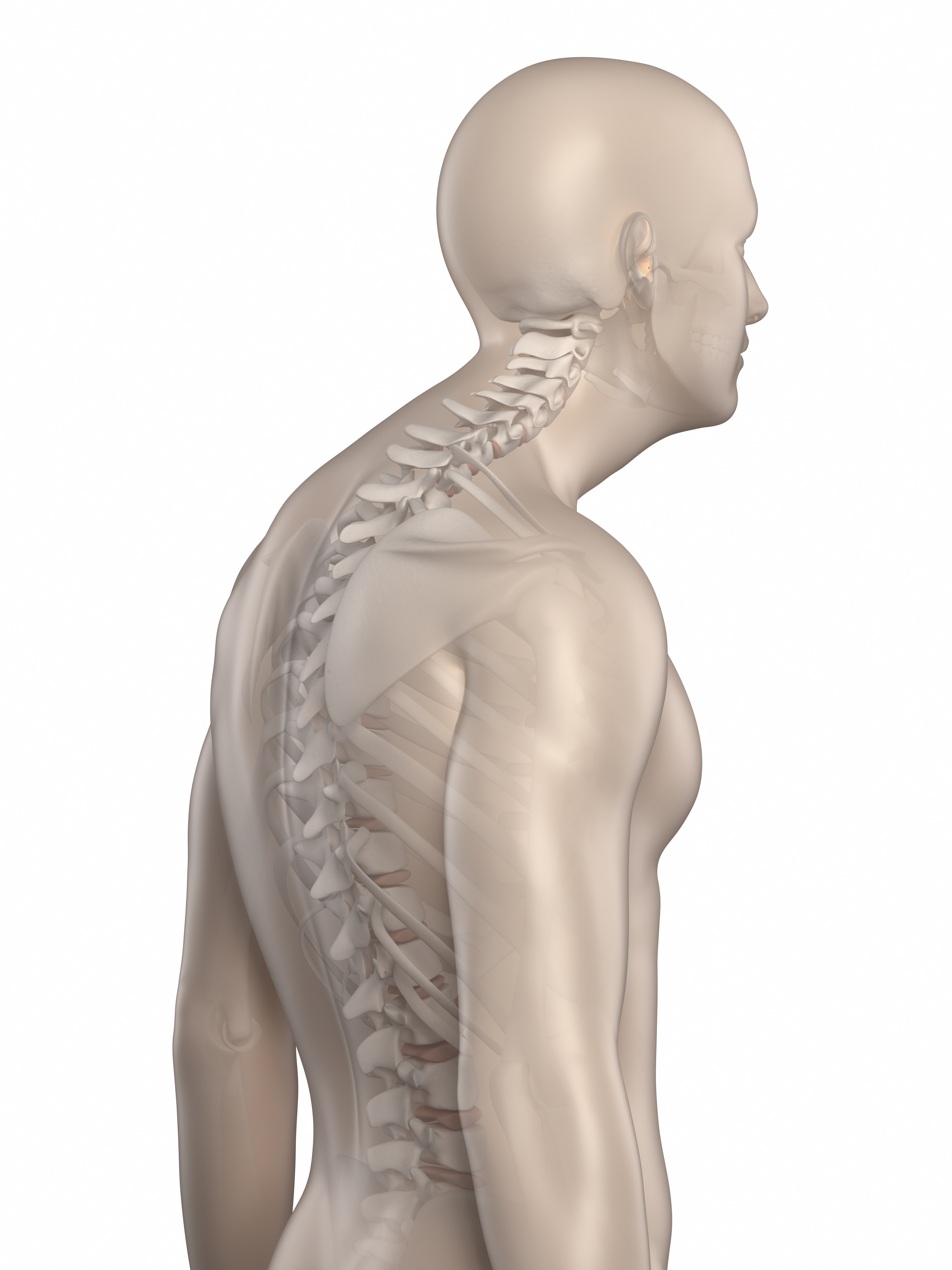View basket (0 items $0.00)

It’s Official: Text Neck Syndrome Is Now a Global Epidemic
It's official: A new study labels text neck and forward head posture a global epidemic and a worldwide public health problem.
According to a new study, the prevalence of neck pain has increased dramatically within the last decade. It is now equally - or more - prevalent than back pain, and significantly, it is affecting younger and younger people.
So what gives? Well, according to the study, at the root of the issue lies the widespread use of computers and cellphones, creating an epidemic of text neck and forward head posture in which the head becomes chronically displaced forward of the shoulders.
And this isn't just an unflattering posture issue. According to the study, 73% of university students and 64.7% of people who work from home have neck, back pain or other problems linked with text neck.
"Neck pain, in general, is a global cause of disability," writes researchers Tsantili, Chrysikos, and Troupis in a 2022 study in Acta Medica Academica." It is a public health problem that has increased remarkably nowadays. The prevalence, independent of age, is high and equal to low back pain."
A Bodywide Syndrome: The Many Symptoms Resulting from Text Neck and Forward Head Posture
Text neck affects adults and children, who display more forward head posture when viewing a cell phone. When the head's weight is displaced forward, the increased gravitational pull creates strain in the neck and cervical spine's muscles, joints, and ligaments.
As a result, researchers now believe text neck, and forward head posture creates a litany of pain issues, ranging from neck pain to shoulder tightness, headaches and migraines, jaw pain, and radiating pain down the arm and forearm.
But unfortunately, the fall-out from text neck syndrome doesn't stop there.
The poor posture and incorrect body alignment linked to text neck also lead to dysfunctional movement patterns, notes Tsantili et al. in the study above. It also weakens the ability to balance. It may even lead to a distorted function of the respiratory, circulatory, digestive, and nervous systems.
The researchers note that forward head posture causes expansion of the upper ribcage and contraction of the lower ribcage. And these changes, in turn, can limit breathing capacity.

Forward Head Posture Reduces Proprioception and Balance
Text neck and forward head posture has also been shown to weaken the proprioceptive system of the cervical spine, which controls posture and balance. The more severe the forward head posture becomes, the worse our proprioceptive abilities are reduced.
Some studies have even shown that people with forward head posture develop abnormal sensorimotor control and autonomic nervous system dysfunction compared to those with normal head alignment.
What Causes Text Neck Syndrome?
While forward head posture (and its advanced relative hyperkyphosis) has been around for a while, researchers have only recently started to sound the alarm.
"During the last few years, a growing report of data is showing that the "text neck syndrome" might be considered as an emerging 21st-century syndrome," notes researchers David, Giannini, Chiarelli, and Mohn in a 2021 study.
In other words, text neck is now considered a clinical condition involving degeneration of the cervical spine.
It is triggered when we look down at the screens of mobile devices or "text" for long periods of time. And unlike most other clinical issues, text neck syndrome is more common in teenagers who spend hours a day hunched over smartphones and personal computers.
It is estimated that 75% of the world's population is hunched over their handheld devices for hours daily with their heads flexed forward.
Text neck is essentially a postural distortion that undermines the health of our posture. Most of us don't consider posture a factor that impacts our health in any significant way.
In fact, however, posture is the all-important structural framework that enables the body to resist the pull of gravity when we are standing, sitting, or moving around and doing our daily activities.
As such, forward head posture distorts our movement patterns and creates increased strain on the upper back and neck muscles. But it can also lead to decreased range of motion (ROM) in the neck and upper back, as well as respiratory dysfunction, decreased vital capacity, TMJ, carpal tunnel syndrome, and more.

How Do You Slow or Reverse Forward Head Posture and Text Neck?
As always, an ounce of prevention is worth a pound of cure. A simple way to prevent text neck is to avoid sitting bent over a computer or smartphone for hours daily.
And when you do sit at your computer or text, be conscious of positioning the screen, so you don't crouch forward with your head extended.
Another important factor to watch out for is your sleeping position, according to researchers.
Sleeping on the side curled up in a C position can accelerate the development of forward head posture, particularly if combined with slumped posture habits during the day.
Once the damage has been done, however, can it be reversed?

Fortunately, yes. A growing number of studies show that yoga and exercise programs focused on improving postural alignment related to forward head posture can help reverse posture. The result is often pain-relief, and an overall better quality of life as the person's breathing capacity and vital capacity begins to improve.
In addition to yoga and posture exercises, other remedies for forward head posture include posture tape, respiratory exercises, and ergonomic corrections to ensure a proper body position when working at the computer or using your phone.
Therapeutic exercises have resulted in major changes to the angle of the forward head posture and an improvement in neck pain. The good news is that results can be obtained within as little as four weeks.
Still, without a doubt, preventing text neck and forward head posture is not an overnight affair. Posture normally declines anyway as we get older and as the muscles of the trunk and spine get weaker.
And if we neglect to take care of our posture, we often pay a steep price at the end of our life. While text neck syndrome may lead to a long list of unpleasant symptoms in our younger years, these are dwarfed compared to the issues that develop if posture issues are allowed to develop into a full-fledged hyperkyphosis or Dowager's hump.
The Many Health Issues Linked to Advanced Forward Head Posture: Hyperkyphosis
Hyperkyphosis is a risk factor for the same problems as osteoporosis, including a greater risk for vertebral fractures, greater risk of falls, and fall-related fractures of the hip, leg, wrist, shoulder, and arm. The risk is greater the more hunched the back is. This risk is independent of bone mass density, which suggests that hyperkyphosis is a separate risk factor for suffering fractures, on par with osteoporosis.
Hyperkyphosis also puts tremendous pressure on the chest and lung cavity, restricting breathing capacity and creating shortness of breath. 
Besides making a person feel miserable, shortness of breath also undermines the body's vital functions. The elderly who suffer from moderate to severe shortness of breath are more likely to die from cardiovascular or lung disease.
So sadly, but not surprisingly, hyperkyphosis also leads to higher mortality rates. Studies have shown that older men and women with a forward-hunched posture have as much as a 44 percent greater mortality rate.
In other words, preventing or cubing text neck and improving posture is not a once and one affair. Like sticking to a healthy diet, keeping our posture healthy and strong involves a lifelong effort.
Posture improvement involves developing healthy habits for sitting, standing, and moving, exercises for keeping the postural muscles strong, and developing our proprioceptive sense of alignment in space.
The Ultimate Yoga Back Care System: Keys to Improving Posture, Preventing Back Pain, and Resetting Your Aging Trajectory

Eva Norlyk Smith, Ph.D., is the founder and President of YogaUOnline. She is a lead trainer in YogaUOnline's Yoga Wellness Educator program, an RYT-300 Yoga Alliance-approved training that focuses on giving teachers the skills they need to offer wellness courses and work with older beginners.
Featured Courses









